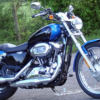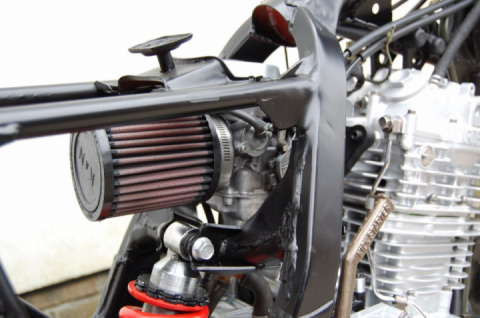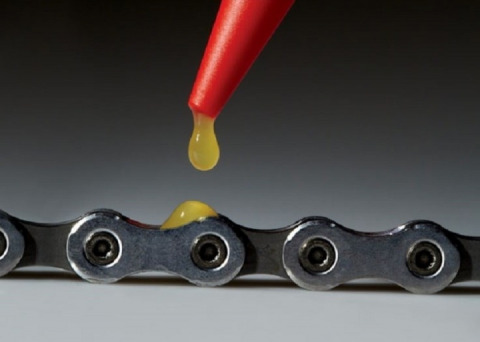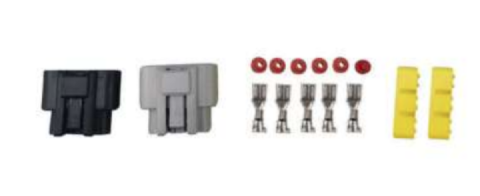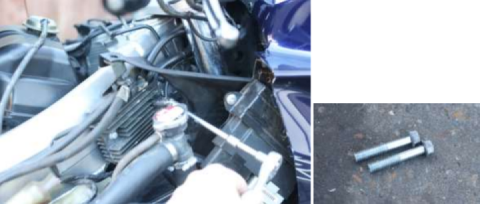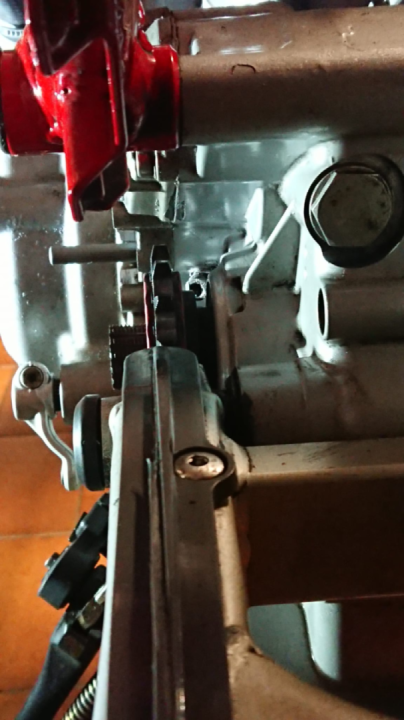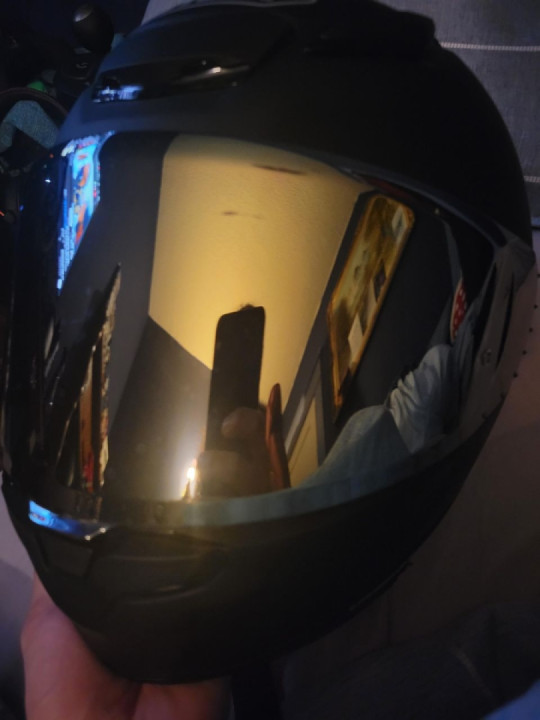How to Take Care of Your Bike's Chain, Part 2
If you don't want to spend big bucks on a new chain kit every season, learning how to take care of your bike is the way. And this is even more important, as basic chain maintenance is a thing pretty much anyone can do without any serious hassle.
Lube is the key
One of the critical aspects of maintaining your bike's chain in top working condition is having it constantly lubricated. Unlike shaft drives which have the gears doused in an oil bath all the time or belt drives which need no lubrication, chains will have a surprisingly short life when not properly lubricated.
Remember that, when the engine pulls, all that force is delivered by the chain rollers grinding against the sprockets. A lubricated chain has a thin film of oil between the two metal parts and, believe it or not, it's that film that does all the magic, as it literally cushions the impact between the two.
Another good thing which comes from keeping your chain lubed at all times is that the bike-specific products also help protect the o-rings or x-rings from external factors such as ozone UV radiation and more. As the rubber rings are coated, they will last more, adding to the chain's life.
While some bike and chain manufacturers specify the lube and cleaning, it is commonly accepted that chains should be lubricated every 300 miles (under 500 km) or so, with cleaning AND lubrication every other interval. A debate on the “perfect” lubrication interval could go on forever, anyway.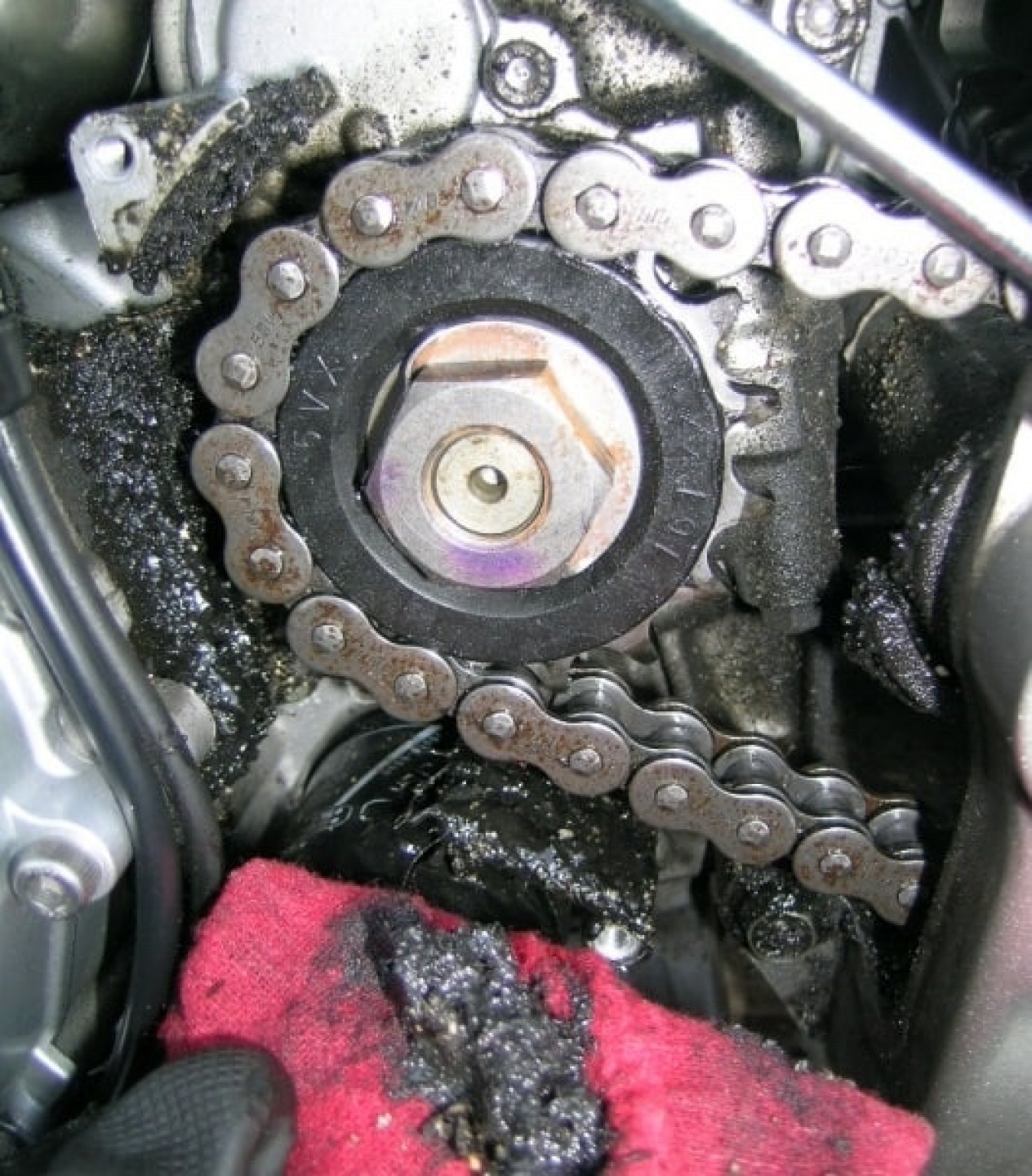
At the same time, riding in the rain will wash off the lube from your chain, so if you're a guy who's not afraid to ride in the wet, you're in for some more lube fun.
How about dirt?
Riding on or off the road makes a rather small difference when it comes to chains becoming dirty, as they WILL get dirty. Off-roading will only soil your chain much faster, and it will need cleaning much more often.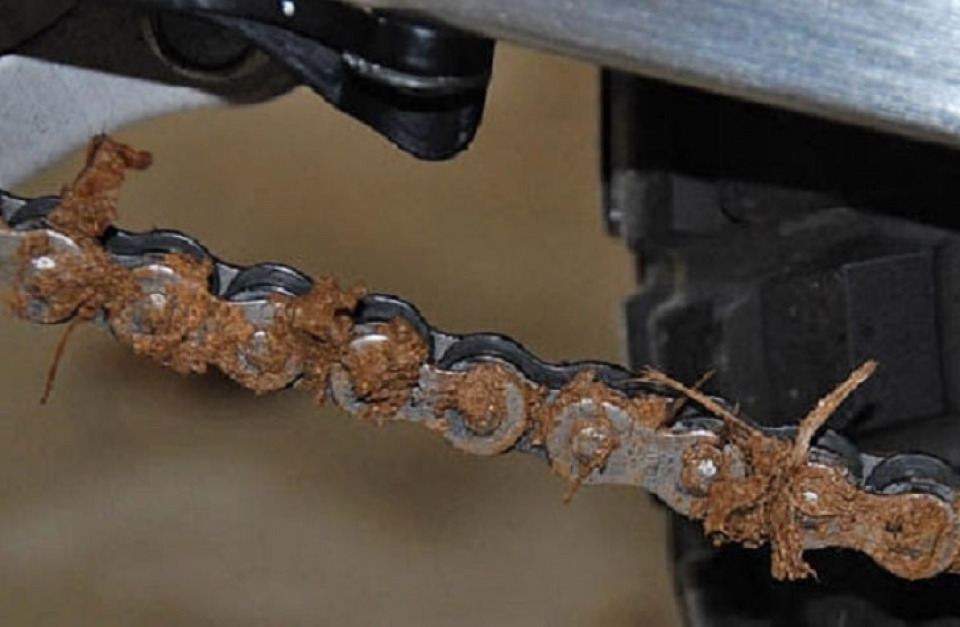
Dirt alone is very bad for the chain, as it acts like a fine sandpaper between the metal parts that come in contact. Add in some lube, and everything turns into a fine grinding paste which will eat through your chain and sprockets with ease and really fast. And that's why periodical chain cleaning prior to adding lubrication is mandatory.
To some, it may sound like a daunting chore, but things are not that horrible when done by the book. Or you can fork out some money and have a workshop take care of this for you.
When it comes to cleaning the chain, there are some really important no-nos:
1. Never use a wire brush, as it will most likely add unnecessary damage to the o/x-rings and it can also damage your chain. A plastic brush (toothbrushes included) and a rag are more than enough.
2. Never use a pressure washer for cleaning the chain. It may appear that it cleans the gunk off it, but what it does is in fact pushing part of it deep past the o/x-rings and add water inside the chain. It will evaporate and fling out at high speed, but you don't have to be a scientist to figure out that water is bad for your chain.
3. Mind your cleaning product. While some say that one can use pretty much any solvent to clean the chain, you should keep in mind that some petroleum derivatives are attacking rubber and you might end up with destroyed o/x-rings. At the same time, some cleaning agents will leave a film on the chain and this will prevent lube from adhering to it.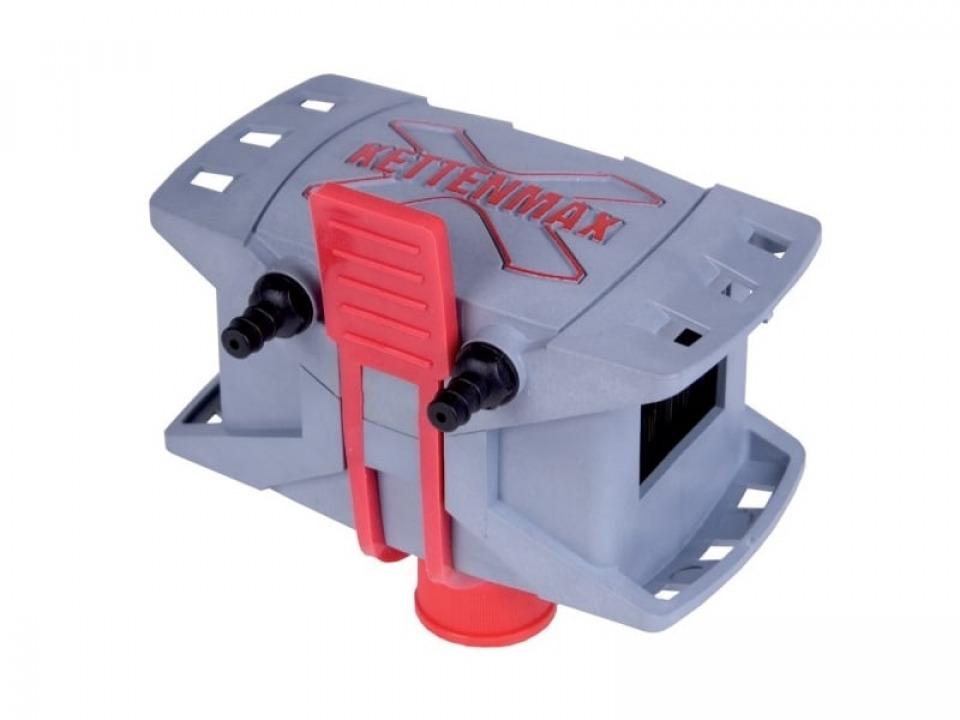
One of the best and safest ways to clean the dirt off your chain is use a plastic brush, spray-on chain cleaning product, and literally rub out the gunk. A cloth is also extremely useful in helping you get between the rollers and wipe the chain clean.
It is essential that you also clean the sprockets, as it's no use in cleaning the chain and then having it roll past the dirty teeth of the sprockets. The chain guide or ramp and the front sprocket are prone to gathering massive amounts of dirt mixed with lube, a compound which is really nasty and which has nothing to do with the bike's transmission.
So that's why removing the front sprocket cover and cleaning it and the space there is a very good idea, and this operation should be carried out twice a year or so.
How to clean the chain?
The cleaning procedure is a really simple one and it is even easier if you have a center stand or a “pit box stand”. The chain can be cleaned with the bike on the kickstand, but the very position is really uncomfortable and will make you hate your decision pretty quickly.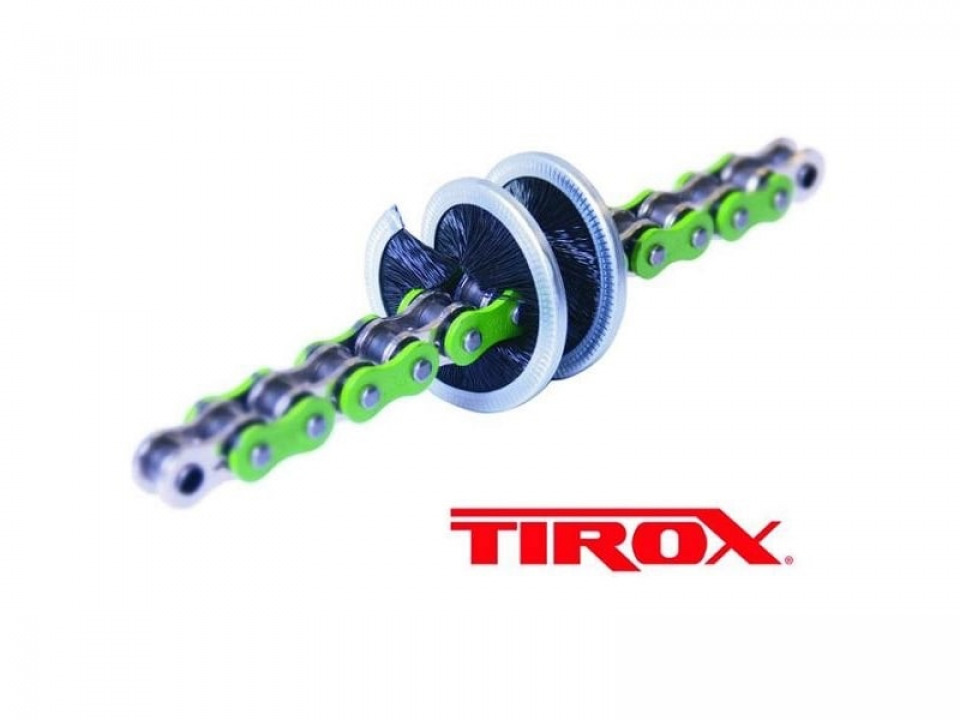
You can do this the old-school way, using chain cleaning products, a brush, and some rags, and start brushing every inch of the chain. It's dirty, but some enjoy this thoroughly. It's also one of the best methods to make sure the chain is spotless before lube is applied. It takes more time, but it's fun and effective.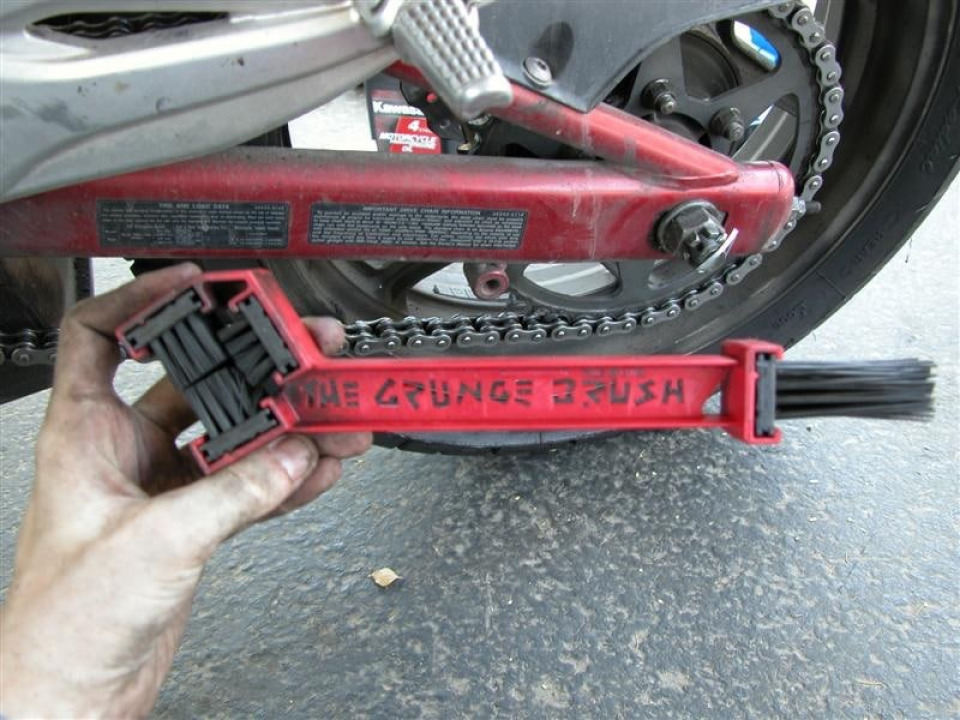
Another cleaning method is using a device such as the Kettenmax (Moose Motorcycle Chain Cleaner or any other similar products), which is extremely simple to operate and can produce very good results when used regularly.
The video below shows a lightly soiled chain, but in the real life, the Kettenmax will become filthy after the first use and cleaning it thoroughly is mandatory. After all, it makes perfect sense to clean the gadgets you use for cleaning, doesn't it?
The video is self-explanatory, and the Kettenmax also comes with a very intuitive manual, so I won't be detailing it here. From my own experience, I'd say that it delivers very good cleaning if used twice or more, depending on how dirty your chain is. It's also very affordable, and you can also share it with your buddies.
Wiping off the excess cleaning solution with a rag will leave your chain (almost) squeaky clean and ready to receive the chain lube.
Safety concerns
Some riders and mechanics have paid a rather high price for what they thought was a way to have things done more comfortably and faster, and the price was fingers. Cleaning your motorcycle's chain the safe way means having your bike turned off. While having the rear wheel in the air using a stand and shifting in the first gear while turned on might seem like a very easy way to have the chain rolling, this can go very, very wrong in instants.
If you're curious, just run a Google search for “motorcycle chain accident” and you'll see that things DO go wrong with both experienced and new riders. So if you need all the fingers intact and full use of your hands, please don't start the bike when cleaning your chain.
This safety issue may be a lesser one when using a device like the Kettenmax, but it's always better to stay on the safe side and do things by the book. It's really better to enjoy the ride than to smile at the fact that doctors could sew back in place all the fingertips and pieces...
Lube time
After cleaning the chain, most people recommend taking the bike for a short spin, some 10-15 minutes, to have the chains tarting to heat up. This is because the warm chain will thin out the lube, allowing it to penetrate better in all the tight places, thus ensuring a better, more thorough lubrication.
The lube is to be applied on the inside of the chain, so that centrifugal force during riding pushes it through the chain towards the outer area, and this is good for you. Some use transmission oil, which is very thick and does the job pretty well, too, but it will not adhere to the chain as good as the chain lube does.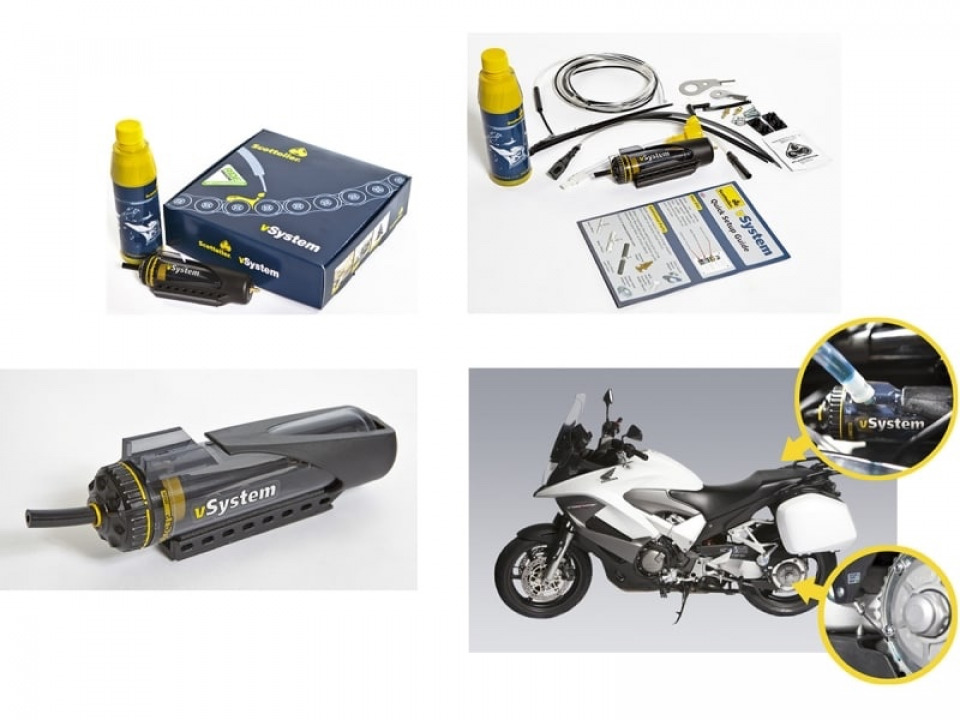
Chain lube has a special composition with agents that cause the compound to literally stick to the metal and ensure a longer, better use. The lube must be applied liberally, but if it starts to drip off the chain, you're using too much of it. Transmission oil will obviously drip more, but just like in the cleaning stage, a piece of cloth for wiping the excess off is a very good idea.
Most chain lube manufacturers specify the time needed for the lube to “settle in,” and you'd better heed those indications. Applying lube and riding straight away will only force the compound to be thrown off the chain, most likely on your rear rim.
And if you think this is no big deal, here are two reasons to change your mind. The first one is that you should remember the gunk around the front sprocket: yes, lube and dirt, wonderful combination. You'll have to use chain cleaner and rub it off the rims, in case you want them clean.
Secondly, in some rather extreme cases, excess lube dripped onto the tire and caused the rear wheel to slip and a low-speed, incredibly silly spill in the parking lot. It happened in front of my eyes, with a guy using too much transmission oil. Laughter and shame...
Some riders will also spray directly on the exterior of the chain, on the rear sprocket, to make sure the chain is evenly lubed up before they set out. Absolutely nothing wrong with this either, as long as you don't exaggerate with the lube and keep the jet away from reaching other parts of the bike that don't need lubrication.
An even more convenient method of keeping your chain lubricated is using the Scottoiler or similar devices. Scottoiler even has an electronic version that offers more features and control over chain lubrication.
DIY systems can also be manufactured fairly easily, and they all reach the same goal of preventing your bike's chain from running without lubrication. Whether Scottoiler is the best solution or not, this is still debatable, as it has fans and opponents alike, each with their own reasons. By the way, I mentioned it here just because it exists.
All in all, caring for your motorcycle’s chain is not as difficult as some fear, and the benefits of taking good care of your bike's chains outweigh the “hassle” tenfold. Your machine will be quieter, smoother, and safer, and you'll ride with full peace of mind.
Catch up with us next time for the final part of the guide, which will be dedicated to chain adjustments.

 Follow
6.1K
Follow
6.1K


